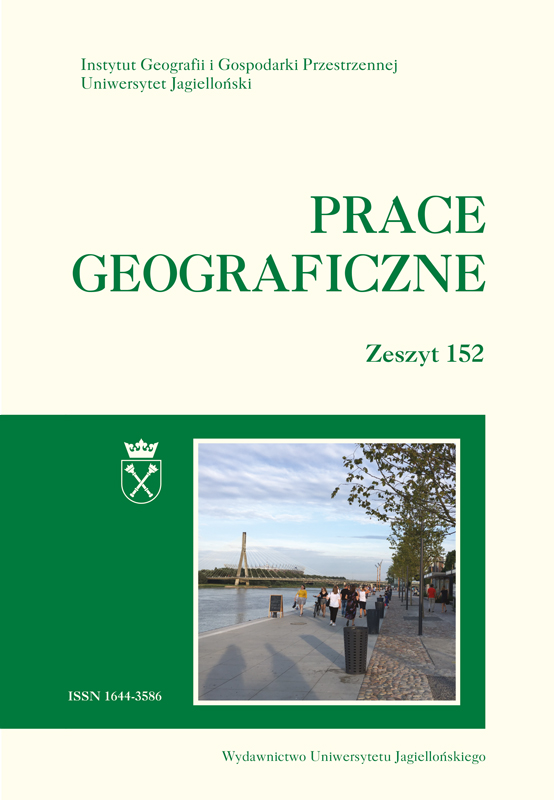Obiekty zabytkowe w przestrzeni wirtualnej gry Ingress – studium małych miast Krakowskiego Obszaru Metropolitalnego
Historical sites in the virtual world of the Ingress game – case study of small towns in the Krakow Metropolitan Area
Author(s): Radosław Uliszak, Mariola Tracz, Malgorzata Bajgier-KowalskaSubject(s): Rural and urban sociology, Tourism, ICT Information and Communications Technologies
Published by: Wydawnictwo Uniwersytetu Jagiellońskiego
Keywords: Ingress game; Krakow Metropolitan Area; small towns; monuments; virtual space; tourism;
Summary/Abstract: Ongoing changes in communications technology create new opportunities not only in terms of acquisition of data on urban cultural heritage, but also in terms of active participation in the creation of such heritage. One example of this is interactive games, which are used in the field of tourism, including urban games and rural games. One of such games is Ingress, which is played in real time in virtual reality on mobile devices. The game board for Ingress is a real map of the world, produced by Google Maps, with superimposed virtual objects (portals) that reflect physical sites in geographic space submitted by gamers and approved by the entity managing the game. The aim of this study was to identify sites in urban space that are submitted to the world of virtual reality in the Ingress game. In addition, the goal was to determine how these sites affect the tourist offering of the city. The study consisted of an analysis of the number and type of historical sites officially listed in the register of stationary historical sites in 12 small towns in the Krakow Metropolitan Area. The list was then compared with their presence in the game of Ingress. The study analyzes the nature of the virtual game map for towns, presents an inventory and classification of sites submitted by gamers, and estimates the rank of historical sites among all sites available in the game. Research has shown a strong dependence of the number of portals introduced into the game of Ingress on the number of residents of local municipalities. The virtual world of attractive sites introduced by gamers into Ingress is substantially different from that shaped by tourist guides and the actual history of cities. The number of Ingress portals per city does not reflect the nature and number of historical sites registered as cultural heritage sites. In small cities, the nature of the portals is similar. Most portals are dominated by commemorative plaques, sculptures, and monuments as well as religion-oriented sites including churches and chapels. On the other hand, the number of recreational, educational, and cultural sites is negligible. The employment of new local marketing strategies based on social networks and urban games is not very common.
Journal: Prace Geograficzne
- Issue Year: 2018
- Issue No: 152
- Page Range: 11-31
- Page Count: 23
- Language: Polish

